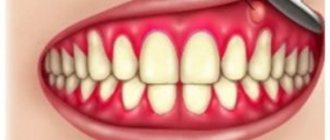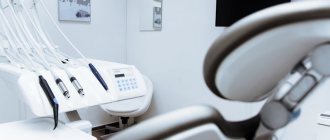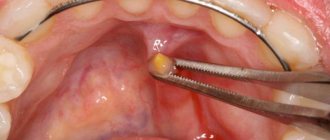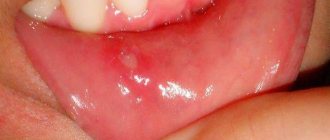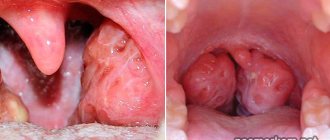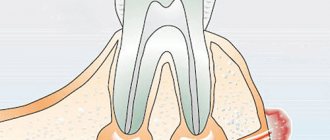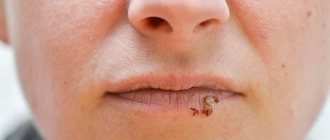Purulent paraproctitis is an inflammatory disease of the tissues surrounding the rectum. The disease is inflammatory in nature and can have an acute or chronic form, as well as varying degrees of spread. This pathology is characterized by the formation of a purulent focus and requires long-term treatment.
Since acute purulent paraproctitis is inflammatory in nature, the cause of the disease is pathogenic microorganisms:
- staphylococcus
- coli
- streptococcus;
- anaerobic microorganisms.
Fiber damage occurs through inflammation of the rectum and various injuries to the anus. It is also possible for pathogenic microorganisms to penetrate through the bloodstream from other foci of infection (inflamed tonsils, purulent wounds, boils).
In addition to infection, the following factors contribute to the development of the disease:
- hemorrhoids and cones, anal fissures
- bowel movement disorder
- diseases of the vascular network (atherosclerosis)
- endocrine system diseases
- general exhaustion of the body, which occurs due to frequent infectious processes, adherence to diets, and alcoholism.
Causes
Acute purulent inflammation of the middle ear is a consequence of the penetration of pathogenic microflora into it and its activation against the background of a decrease in the body’s own defenses.
Often the infection enters the middle part of the hearing organ through the inflamed auditory tube connecting the nasopharynx to the ear. With sinusitis, sinusitis, proliferation of adenoid vegetations, tonsillitis and other ENT diagnoses, pathogenic microflora enters the auditory tube (for example, with sharp blowing of the nose), it becomes inflamed - eustachitis develops. If treatment was ignored or was ineffective, pathogenic organisms enter the ear through the auditory tube. This is the first variant of infection.
The second way is through a rupture in the eardrum or damage in the mastoid process (the area of the temporal bone associated with the middle ear). Otitis of this etiology is called traumatic.
A rarer route is through the blood, when during infectious diseases, for example, scarlet fever or measles, pathogenic flora spreads through the bloodstream and enters the hearing organ.
The disease develops due to decreased immunity. Factors provoking this may be:
- problems with the endocrine system;
- lack of vitamins;
- bad habits;
- diseases of the ENT organs;
- diabetes;
- frequent entry of water into the ear (local immunity decreases).
Cause of occurrence
As mentioned above, the main reason is the penetration of infection into the periosteum area. But there are other factors that provoke the development of pathology:
- untreated caries;
- osteomyelitis;
- poor oral hygiene;
- injury to the tooth or mucous membrane;
- acute infectious diseases (flu, measles, tonsillitis);
- violation of sanitary standards during dental treatment.
Thus, the acute form of the disease often occurs against the background of concomitant diseases and exposure to bacteria.
Symptoms of purulent otitis media
A distinctive sign of the disease, which distinguishes it from non-purulent otitis media in adults and children, is discharge of purulent exudate from the ear. This sign is not always present. Suppuration is possible only when pus ruptures the eardrum. If the eardrum has not ruptured, the purulent accumulations cannot leave their location, which can lead to possible complications.
Another sign of suppurative otitis media is ear pain. It can be either tolerable and non-intense, or simply unbearable.
During the period of inflammation, body temperature may rise, although this is not a mandatory sign.
Patients also note hearing loss, ear congestion and headaches.
It is more difficult to understand that a child has developed otitis media, since children cannot clearly explain what and how it hurts. In infants, diagnosis is even more difficult. But based on his behavior, one can suspect ear inflammation: the baby is capricious, has become whiny, and refuses milk.
The disease occurs in stages: inflammation goes through several stages. These stages of otitis differ from each other in symptoms.
Main symptoms
- pain in the area of the affected tooth;
- increased sensitivity to cold and hot;
- severe swelling of the gums;
- the appearance of an unpleasant odor;
- headache;
- enlarged lymph nodes in the neck;
- elevated body temperature.
In acute purulent periostitis, symptoms usually appear within three to five days after infection.
Periostitis is characterized by a constant increase in the intensity of symptoms. The first manifestation is severe throbbing or bursting pain, which intensifies when you press on the inflamed tooth.
The acute purulent form may also be accompanied by symptoms such as: loss of appetite, general weakness, insomnia.
Stages of otitis media
There are three stages of acute otitis: pre-perforative, perforative and reparative. But this does not mean that a person will necessarily go through all these stages. With good immunity and timely visits to an otolaryngologist, it is possible to stop inflammation in the initial phase.
The first stage is the so-called acute catarrhal otitis media (acute non-purulent otitis media). Catarrhal otitis in children and adults occurs with intense pain in the ear, which increases towards night. At this moment, it’s as if something is pulsating or shooting in the ear; the pain can radiate to the teeth or the temporal part of the head. This condition is very difficult to tolerate. The ear tissues swell, the eardrum and auditory ossicles become less mobile, which certainly affects hearing acuity. During this same period, noise in the ear appears. Temperatures may rise to fairly high levels. The patient feels lethargic, tired, and loses his appetite. Further development of catarrhal otitis in a child and an adult patient can be prevented if in time, when the first signs of inflammation are detected, you consult an otolaryngologist. If treatment of acute otitis in children and adults was not carried out on time, the second stage occurs.
The perforated stage is when the pus accumulated in the tympanic cavity breaks through the eardrum, forming a hole in it - a perforation. It is at this stage that suppuration from the ear canal is observed. At the same time, the patient feels noticeable relief: the pain subsides, the body temperature drops, and the patient’s general condition improves. Suppuration can last up to five to seven days. If a natural rupture of the eardrum does not occur, the otolaryngologist will do it forcibly.
By the way, it is not pus that may accumulate in the tympanic cavity, but serous fluid. In this case, a person is faced with acute serous otitis. But this is a topic for a separate article.
The reparative stage is the final stage in the development of the disease. This is the so-called healing stage. The suppuration stops, the restoration of the eardrum begins, and hearing gradually returns to normal.
Typically, the disease, provided that all three stages are completed, lasts two to three weeks.
Chronic suppurative otitis media
Chronic inflammation is always preceded by acute inflammation. The course of the disease is not accompanied by such striking symptoms as the acute form, so many do not immediately seek medical help, thereby wasting time, and the disease continues to progress.
The main sign of chronic inflammation is constant suppuration from the ear canal. In this case, there may be no pain, or it will be mild, and the body temperature will be normal.
The disease is divided into mesotympanitis and epitympanitis. With mesotympanitis, inflammation covers the mucous membrane of the tympanic cavity without affecting the bone structures. With epitympanitis, destructive processes occur in bone tissue.
In order not to bring your condition to chronic inflammation, which will then have to be difficult and long to treat, it is important to contact an otolaryngologist at the acute stage of the disease when the slightest signs of the disease appear.
Causes and symptoms of periostitis
Symptoms of periostitis include swelling of the gums and face, suppuration, fever, and severe pain. The severity of dental flux manifestations depends on the form and severity of the disease. Swelling and asymmetry of facial contours depend on the location of the inflammation. With periostitis of the upper jaw, swelling of the upper lip, cheek and infraorbital area occurs. With periostitis of the lower jaw, swelling can be observed in the lower part of the face.
The causes of flux can be:
- failure to comply with hygiene rules;
- diseased or untreated teeth;
- consequences of complex tooth extraction;
- jaw injuries;
- infectious and inflammatory processes in the body;
- weakened immunity.
Complications of acute purulent otitis
If the disease is treated late or incorrectly, acute inflammation can become chronic.
Chronic purulent otitis is the most common complication of the acute form. There are two forms of chronic suppurative otitis media – mesotympanitis and epitympanitis. The disease can also lead to:
- labyrinthitis - inflammation of the inner ear;
- to the spread of purulent inflammation to the membranes of the brain (meningitis, brain abscess);
- sepsis;
- paresis of the facial nerve, when the face becomes asymmetrical and the affected side loses its mobility;
- mastoiditis – inflammation of the mastoid process of the temporal bone;
- hearing loss or complete hearing loss.
Diagnostics
For an experienced otolaryngologist, diagnosing the disease is not difficult. When making a diagnosis, the ENT doctor relies on the patient’s complaints and the results of otoscopy (examination of the hearing organ). The patient may be referred for a number of laboratory tests that will confirm or refute the presence of inflammation. To assess the degree of hearing impairment, audiometry or tuning fork testing is performed. To assess the condition of the components of the middle ear, tympanometry is performed. In severe cases, the patient is sent for X-ray, CT, MRI.
Treatment of acute purulent otitis
Treatment of otitis media in adults, and especially children, should be carried out under the supervision of an ENT doctor. It should be borne in mind that the treatment regimen will vary depending on the current phase of the disease.
So at the initial stage, until the eardrum ruptures, the doctor prescribes ear drops (Otinum, Otipax, etc.), which have an anti-inflammatory and analgesic effect. There is no point in using local antibiotics in this case, since the problem is behind the membrane, and if there is no hole in it, the medicine will not reach its target. Therefore, the patient is prescribed general antibacterial drugs.
As soon as the eardrum ruptures, the above drops cannot be used, as they can harm the labyrinth of the inner ear. In this case, antibacterial ear drops, such as Otofa or Normax, are prescribed.
To relieve tissue swelling, you can use antihistamines (Zodak, Zyrtec, etc.) and vasoconstrictor nasal drops (relieves swelling of the auditory tube).
When the temperature rises, it is recommended to use antipyretic drugs (for example, Nurofen or Paracetamol).
Any drug, especially an antibacterial one, should be prescribed exclusively by a doctor and taken strictly taking into account the dosage and frequency of administration.
Don't forget about physical therapy. Physiotherapy helps relieve inflammation and speed up recovery.
As therapeutic procedures, the otorhinolaryngologist performs toileting of the middle and outer ear, placing medicinal micro-compresses, and rinsing the tympanic cavity with medicinal solutions.
If the purulent masses were unable to rupture the eardrum on their own, the otolaryngologist “helps” by making an incision in it and releasing the purulent accumulations outward.
Treatment of periostitis with physical factors
The complex approach to the treatment of periostitis is complemented by the use of therapeutic physical factors:
- ultra-high-frequency therapy (an electromagnetic field, or UHF, acts as a therapeutic factor in inflammatory processes);
- magnetic applicators (magnetotherapeutic treatment of inflammatory processes);
- medicinal electrophoresis (using an electric current of low voltage and low strength, a medicinal substance is introduced into the body as an additional therapeutic factor);
- helium-neon laser rays (have anti-inflammatory, bactericidal, regenerative effects).
Physiotherapy for acute purulent otitis media
An important stage in the treatment of the disease, which enhances the effect of drug therapy and accelerates the recovery process, are physiotherapeutic procedures.
For acute purulent otitis, the following types of physiotherapy are effective:
- infrared laser therapy (reduces inflammation and relieves swelling of tissues);
- vibroacoustic therapy (improves blood and lymph flow, providing a good therapeutic effect for inflammation of the middle ear);
- ultraviolet irradiation (has a bactericidal effect);
- ultrasonic medicinal irrigation (has an anti-inflammatory effect);
- photodynamic therapy (helps relieve inflammation);
- ultrasound therapy (promotes deeper penetration of medicinal ointment, relieving inflammation and swelling of tissues);
- infrared laser exposure (stops the inflammatory process).
Which procedures should be used and how many sessions will be needed is determined by the ENT doctor, based on the patient’s condition.
Treatment of various types of periostitis
Treatment of serous periostitis
Serous periostitis can occur due to jaw trauma. No special therapy is required to treat serous periostitis. At this stage, it is possible to clean the dental canal and create the opportunity for the independent release of fluid (exudate) during inflammation.
Treatment of acute purulent periostitis
In the case of acute purulent periostitis, the dentist cuts the gum, removes the pus and drains the suppuration. When draining, the tip of a rubber strip (drainage) is inserted into the cavity at the incision site. Drainage prevents the wound from healing too quickly and allows fluid to drain out. It is advisable to remove a diseased tooth, the source of infection of acute periostitis, if:
- severely damaged crown;
- obstruction of root canals;
- lost functionality;
- ineffectiveness of the non-surgical method;
- mobility.
In other cases, it is recommended to eliminate the relevant causes of infection (for example, inflammation of the tonsils and throat), as well as restore the immune system. The most effective approach to the treatment of acute purulent periostitis is complex therapy, combining surgery, drug therapy and physical therapy.
Treatment of diffuse periostitis
Diffuse periostitis is characterized by widespread infection, not limited to a local focus. This is a severe type of disease. As a rule, the patient needs the help of maxillofacial surgeons. In stationary conditions, an operation is performed to remove part of the periosteum or bone. Treatment of diffuse periostitis is complemented by drug therapy and detoxification.
Treatment of chronic periostitis
Chronic periostitis is a sluggish infection typical of patients with impaired immunity. If disease is present, the inflamed area is cleaned and physical therapy is prescribed to reduce symptoms and eliminate infection. In particularly difficult cases, the treatment of chronic periostitis may require serious surgical intervention to completely remove diseased tissue. In addition, with this form of flux, it is important to carry out therapy with vitamins and means to strengthen the immune system. An integrated approach stimulates an increase in the body's immunity.
Prevention
There are no specific preventive measures to avoid suppurative otitis media. To reduce your risk of getting sick, strengthen your immune system and promptly treat any ENT infection you encounter. An important point: treatment should not only be timely, but of high quality: no self-medication, only competent assistance from an otolaryngologist. There is no need to start the disease. At an early stage, any disease is much easier to treat: in many cases, the accumulation of purulent masses in the middle ear could be easily avoided by contacting an ENT doctor in time.
If you or your loved ones are faced with hearing problems, do not waste time: make an appointment by calling +7 (495) 642-45-25 and come.
We will definitely help you!
